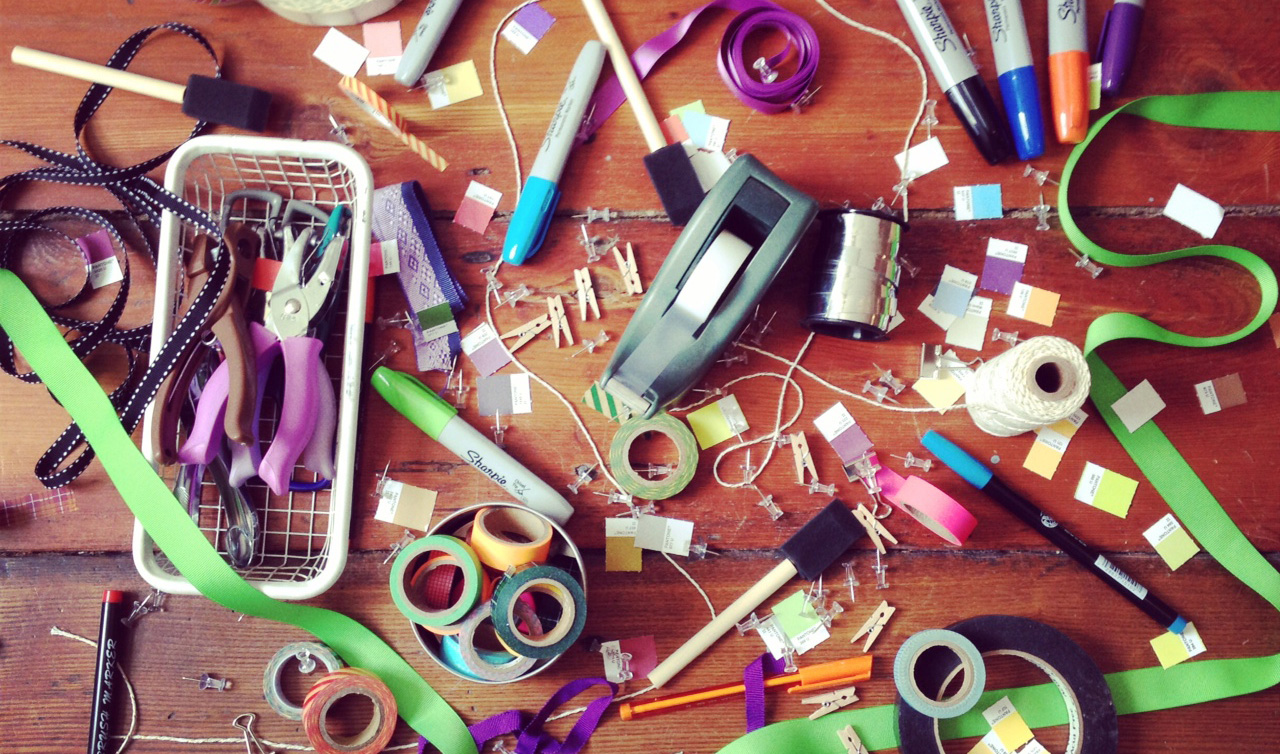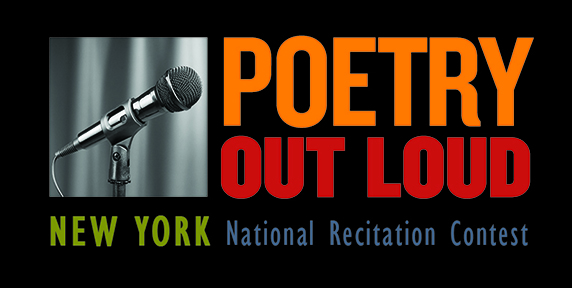I love using found poetry in my workshops! If you’re unfamiliar with the form, here’s a definition from the Academy of American Poets: “Found poems take existing texts and refashion them, reorder them, and present them as poems. The literary equivalent of a collage, found poetry is often made from newspaper articles, street signs, graffiti, speeches, letters, or even other poems.”
Found poetry is a great introduction to poetry that showcases the versatility and variety of the genre. I also love that it engages our sensory systems. There’s the tactile work of cutting, gluing, and pasting on paper. The scent of Sharpie or paint from black-out texts. The sound of tearing pages and phrases out of old texts. And the taste of… Well, maybe we shouldn’t really eat any of it.
In my work, I facilitate poetry workshops for students with autism and developmental disabilities. By making poetry a full sensory experience, the genre becomes more accessible to students whose sensory needs might otherwise preclude them from engaging in poetry and writing workshops.
There are three outlines for the found poetry sessions I run. These are fairly broad descriptions as the lessons are intended to be adjusted, edited, and adapted to meet the needs of your poets. The first two I usually run in half-hour to forty-five minute windows and the final one should at least be an hour, but you can go as long as your group needs!
Actually Finding a Poem
This is something I often do with younger groups, but it’s just as fun for poets of any age! I’ve done this at poetry festivals with rooms full of professors, editors, and publishers who all had a blast. It’s simply hide-and-seek with poetry.
Before the workshop, I’ll hide a couple short poems such as “Silly Animals,” “Old Dog Queenie,” and “Poor Rover,” all by Langston Hughes, in a sensory box. A sensory box is just a cardboard box full of cotton balls, tissue paper, fluff, and other small, soft, objects that offer poets tactile input. Or, if you’re feeling particularly brave, you can use a big plastic Tupperware filled with water beads, slime, and other messy play materials.
Then, I’ll use this box as sensory warm-up, starting the session by giving every poet a turn to reach in and find a poem. Once everyone has a text, we’ll take turns reading them aloud before diving into our own writing.
One note: if you go the messy route, be sure to laminate the words ahead of time so that they can stand up to the wet and goo. It also helps to have a sink and paper towels close by!
Another version of this is to have poems hidden scavenger-hunt style around the room and let the poets go and explore the space to find them. Once a poet finds a text, they come back to the table or group space and sit down while the others finish searching. When all the poems are found and everyone is back together, you can do a read aloud of the texts.
This breaking apart and reuniting of the group is an important piece of the social-emotional learning at play in the workshop. In waiting until everyone has found a poem, I’m showing that the workshop will only move forward as a group, and letting everyone read their poems creates an environment of mutual respect for each other’s voices.
Using a Single Poem
When using a single poem, I’ll look at the recommended texts in the New York ELA Standards to find material that’s most suitable for a found-poem project. I usually stay away from novel excerpts and short stories, preferring poems, articles, speeches, and documents. I’ve found that isolating the diction of these texts often presents more unique challenges and interesting observations. Texts on the New York State list I might turn to are historical documents like the Declaration of Independence (12th grade), monologues like from A Midsummer Night’s Dream (8th grade), or speeches such as Malala’s “Address to the United Nations Youth Assembly” (10th grade).
One of my favorite projects in this model is my work with William Wordsworth’s poem “I Wandered Lonely as a Cloud,” a pretty common text across states for high school students studying English and specifically English Romantic poetry.
The session starts with a little sensory, science workshop called “Rain Cloud in a Jar.”
There are variations of this all over Pinterest, but the basics of the activity are to fill a mason jar about three-quarters full of warm water, top that water with shaving cream, and then drop a few dollops of blue food coloring into the shaving cream. After a few minutes, the food coloring will bleed through the shaving cream and start making blue, rain-like streaks in the water.
I like starting with this because it immediately engages the poets in the cloud imagery of the text, creating a tangible connection to an abstract concept. Furthermore, there’s a lot of looking and waiting involved, and I’ve found that this anticipation brings the group together, as everyone is excited to see how the rain will look!
For the poem itself, I cut up words and phrases from Wordsworth’s piece and let the poets choose these selections out of a big bag one at time. As these words and phrases are drawn, we can talk about them, discuss their meaning, and what meaning they might have in a poem titled “I Wandered Lonely as a Cloud.”
After a few rounds of drawing text from the poem, the group has enough material to start on their own pieces. On blue construction paper (or pieces of sky) I’ll give them time to glue on their snippets of “I Wandered Lonely as a Cloud” and create their own poems. I’ll leave time to share at the end and, as part of the sharing, I’ll read Wordsworth’s text in full.
Using Multiple Texts and Mediums
I love setting up a bunch of poems, texts, and materials for students to choose from. It always results in amazing collages of words, images, and designs!
If I have the space, I’ll put these texts and materials on different tables. So for example, one table of poets might have all the Sharpies and an old art history text book, while another table has all the scissors and an outdated children’s book.
In doing this, my intent is to encourage poets to both move and socialize. If they need or want something that’s not at their table, it’s up to them to advocate for it by getting up and talking to the other poets in the group.
As I mentioned in the introduction, I run these sessions a little longer than the other two lessons to give plenty of time for the workshop participants to interact with each other and not feel rushed in finishing their poems.
This is a modality I use when working with teens and young adults because it’s developmentally respectful of their age, while still providing a range of fine motor activities (cutting, drawing, coloring, ripping, gluing, taping). In this way, poets can find the method that’s most comfortable or pleasing for them to engage with the text and lesson.
There’s no right or wrong set-up to this model. I just keep a little bag filled with art supplies and books I find in “free boxes” that are left outside of thrift stores. You can mix and match craft materials and texts to suit the preferences of your workshop!
Top Photo: Odyssey
Donnie Welch (he.him) is a teaching artist living in Northern Manhattan who has been in the classroom since 2014. His teaching integrates sensory, movement, and rhythm to make the abstractions of poetry and writing more accessible. His workshops function with the belief that: movement helps us understand rhythm, rhythm helps us understand poetry, and poetry helps us understand each other. Along with his education work, Welch is a published poet and children's author represented by Lynnette Novak of The Seymour Agency. When not teaching or writing, he can most likely be found hiking in Inwood Hill Park, the Hudson Valley, or somewhere along the Appalachian Trail.



